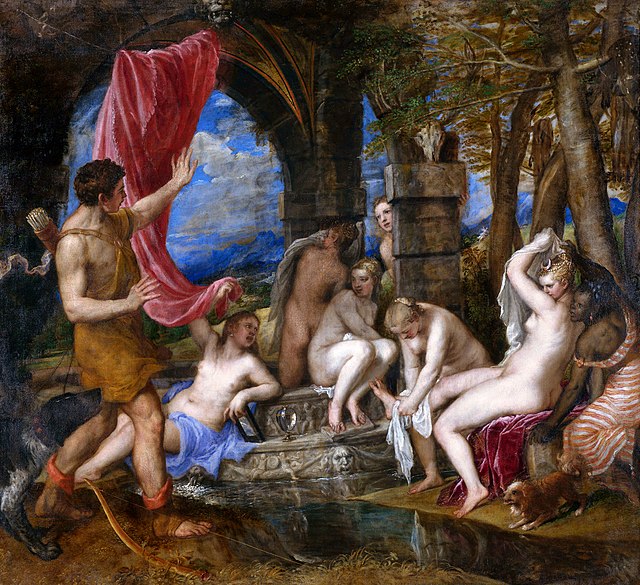Adolph Friedrich Erdmann von Menzel was a German Realist artist noted for drawings, etchings, and paintings. Along with Caspar David Friedrich, he is considered one of the two most prominent German painters of the 19th century, and was the most successful artist of his era in Germany. First known as Adolph Menzel, he was knighted in 1898 and changed his name to Adolph von Menzel.
Adolph von Menzel in 1900
The Iron Rolling Mill (Modern Cyclopes), 1872–1875
Emilie Menzel Asleep, c. 1848. Oil on paper, 46.8 × 60 cm. Hamburger Kunsthalle
The Balcony Room, 1845
History painting is a genre in painting defined by its subject matter rather than any artistic style or specific period. History paintings depict a moment in a narrative story, most often Greek and Roman mythology and Bible stories, opposed to a specific and static subject, as in portrait, still life, and landscape painting. The term is derived from the wider senses of the word historia in Latin and histoire in French, meaning "story" or "narrative", and essentially means "story painting". Most history paintings are not of scenes from history, especially paintings from before about 1850.
Diana and Actaeon, Titian, 1556–1559, a classic history painting, showing a dramatic moment in a mythological story, with elements of figure painting, landscape painting and still-life.
Judas Returning the Thirty Silver Pieces by Rembrandt, 1629.
Jacques-Louis David's Oath of the Horatii, 1786, with a scene from ancient history.
Venus, Cupid, Folly and Time, Agnolo Bronzino, c. 1545. According to André Félibien allegory was the highest form of all history painting.








